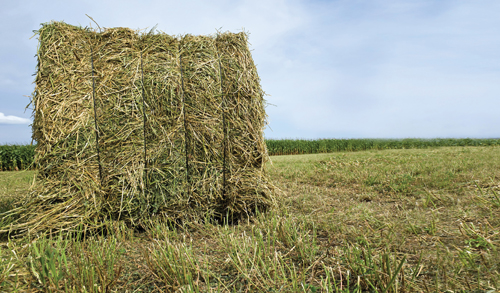
Dried alfalfa bale waiting for storage. Alfalfa is a perennial flowering plant in the pea family. It is cultivated as an important forage crop in many countries around the world.
During your last trip to the grocery store, how many times did you pick up a package, flip it over and read the nutrition label on the back of the box?
It’s likely you know how many calories are in a serving of your favorite snack. And if you’re following a restricted diet you know how many sugars, carbohydrates and other ingredients are in the foods you eat.
Performance horses require the same level of attentiveness to their diet to stay in peak condition.
While there are an endless number of choices of feed and supplements, hay is the foundation of a healthy horse’s diet.
“Hay typically makes up 75-100 percent of your horse’s diet; therefore, it supplies the bulk of the daily nutrients,” says Paul Sirois, Manager of Dairy One/Equi-analytical Laboratories in Ithaca, New York.
The nutrients a horse needs depends on its workload, age and overall wellness. “Digestible energy (DE) and crude protein (CP) are the two most critical nutrients for all horses. Both are important to ensure optimal performance, growth and health,” he says.
Young horses specifically need calcium (Ca) and phosphorus (P) for proper bone formation. Lactating mares need higher levels of DE, CP, Ca and P to maintain their own body weight and to provide sustenance for the foals they’re nursing.
“For the carbohydrate challenged horse, for example insulin resistance, the water soluble carbs (WSC), ethanol soluble carbs (ESC) and starch play a vital role in assessing the suitability of hay,” he adds.
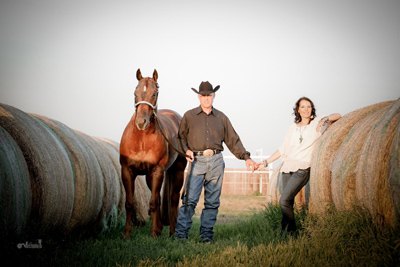
Wes and Dana Wetherell
Hay provides more than essential nutrients, it also supports digestive health.
“Forage is the key to good gut health and it helps with horses that have stomach ulcers. I have customers who buy good hay and cheap feed. When you look at their horses, you can see the difference,” says Frank Chick, Jr., owner of Chick’s Farm and Feed Supply in Delaware.
Quality hay is tasty and keeps a horse snacking all day long.
“It keeps the show horse’s mind right and relaxed, especially at a show. Plus it keeps my clients happy knowing that their horses are eating non-stop,”says Tom Forehand, AQHA and APHA trainer in Colorado.
Dan Rawlings, an AQHA trainer in Pennsylvania agrees.
“I like to feed a mix of hay so I can keep it in front of my horses all day long,” he says.
Good hay is also a space spacer. “People who buy from me are going to shows and there is not always room to bring a lot of hay. With quality hay you can bring a whole lot less and the horse eats it better, leaving less waste,” explains Tony Burris, a North Carolina based AQHA judge and trainer and hay supplier.
Although premium hay is costly, it’s worth the investment.
“I feed straight alfalfa because I find it keeps more weight up over the horse’s back and hips than grass hay and I don’t need to feed near as much grain when I use good quality alfalfa,” says Wes Wetherell a trainer and hay supplier in Oklahoma.
 Visual appearance is one indicator of quality. “If the color is good, and (for alfalfa) it’s not too stemy and has lots of leaves, I know it’s good quality hay,” says Burris.
Visual appearance is one indicator of quality. “If the color is good, and (for alfalfa) it’s not too stemy and has lots of leaves, I know it’s good quality hay,” says Burris.
Weight is another clue to the quality of the hay. “Weeds are light. If it’s a heavy flake or bale, I know the quality is good,” says Forehand, “I can also tell there is a lot of substance if the flake stays together when it’s picked up.”
Knowing what’s in your hay is more than knowing whether or not it is grass hay with timothy, bromegrass or alfalfa. It’s about knowing the nutritional make-up of the hay so that grain and/or supplements can be used to fill in any gaps.
The exact nutritional content can only be determined through a lab analysis. Labs across the country are often associated with a college or university. Choose a lab and visit their website for details on packaging, labeling and shipping a sample for analysis. It’s important to collect samples from several different bales because the nutrient composition can vary from one bale to the next. If you don’t own a hay probe, ask your feed dealer or a local cooperative extension agent if they have one you can borrow.
“A proper sample should be taken from a dozen bales using a hay probe,” Sirois says. A hay probe takes a core subsample from the center of the bale. This ensures that a true cross section of the bale is represented. Analysis packages range from $18-$79 per sample and depending on the package selected can take one to five days for processing.
Where’s the best hay come from?
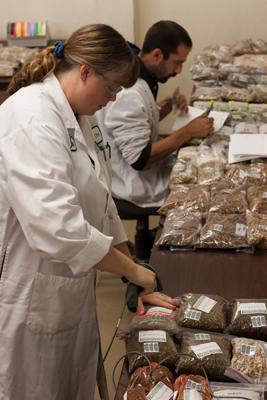 Lack of available land, time and production costs often prohibits trainers and exhibitors from growing their own hay. Instead they rely on local growers, feed stores or hay suppliers. Alfalfa is most often the hay of choice among breed show circles, but price, supply and geographic location often dictates whether or not it is a viable option. “I’d love to feed pure alfalfa,” says Rawlings, “but it’s hard to get.”
Lack of available land, time and production costs often prohibits trainers and exhibitors from growing their own hay. Instead they rely on local growers, feed stores or hay suppliers. Alfalfa is most often the hay of choice among breed show circles, but price, supply and geographic location often dictates whether or not it is a viable option. “I’d love to feed pure alfalfa,” says Rawlings, “but it’s hard to get.”
Western states including Arizona, Idaho, Nebraska, Oklahoma and Kansas are best known for producing top-notch alfalfa thanks to the arid climate. “The best quality hay comes from out west because of the low moisture levels,” says. Chick. Because growers in Arizona, Idaho and Nevada have arid climates, they don’t have to wait as long for the hay to dry, preserving the nutritional value.
Typically hay growers in those areas cut the crop every 21 days, ideally before it blooms. “That gives the hay the highest relative feed value and crude protein,” Wetherell says.
Weather plays a significant role in the quality and quantity of hay available for purchase. “Typically Idaho has better hay than Arizona,” Chick says, “last year though the hay from Idaho wasn’t as good because they got more rain.” The nutrients present in the soil also provide added nutrients. “Out west they have volcanic soil which naturally has a lot more magnesium and other nutrients so you don’t have to add them in as supplements,” he adds.
That’s not to say that hay grown on the East Coast can’t be good quality, it just may lose some of its nutritional value while the moist air means longer drying time in the field.
“The DelMarVa area where I’m from has too much humidity to make hay with the same nutritional value as the hay from out west,” he explains.
Others agree that good quality hay can be found among reputable producers in the region. “I’m lucky that I have a client that produces good hay so we barter,” Rawlings says.
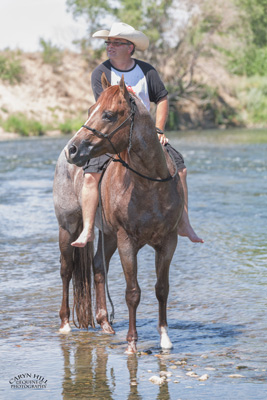
Tom Forehand
Regardless of whether or not you buy from a grower or rely on a hay supplier, it all comes down to trust.
“We only buy from a couple of family growers and we rely on them to be our eyes in the field. We know they care as much as we do so we know we are getting consistent hay,” Burris adds.
Pricing
It’s no secret that good quality hay is expensive. “Hay prices have gone out of sight the last few years,” Wetherell says. Shipping costs, equipment and the cost of production have contributed to every increasing prices.
“It’s expensive to haul hay in from out west. It can be as much as $5,000 a truck load, which adds $10 to $12 per bale,” Chick says. Remote regions or areas that do not have a lot of established trucking routes can expect to pay even more to bring hay in.
Competition with the larger agricultural industry has also driven prices higher.
“When corn was $7.00 a bushel, a lot of farmers plowed up their alfalfa fields and planted corn instead,” Wetherell commented, “now that corn prices have dropped to $3 or $4 a barrel everyone’s wishing they still had alfalfa fields.”
Horse farms are often competing with dairy farms when it comes to buying top quality alfalfa.
“When milk prices are down, hay is a bit cheaper because dairies try to find an alternate feed source, but when milk prices are up dairies are willing to give more for hay,” he says.
Large stables with the luxury of ordering in large quantities have the opportunity to lock in pricing and secure the amount of hay they need early in the season.
“I already put money down to lock in the hay I want,” Forehand says, “not everybody can do that.”
The fundamental principle of supply and demand also dictates pricing.
“The best time to buy is when farmers have their barns full. But the last several years that hasn’t been the case. No one has had enough hay,” Wetherell adds. Plan to purchase 15 percent more hay than the estimated tonnage you’ll need. “Everybody’s program is a bit different, but when hay sits in a barn and dries it loses 15 percent of its weight,” he cautions.
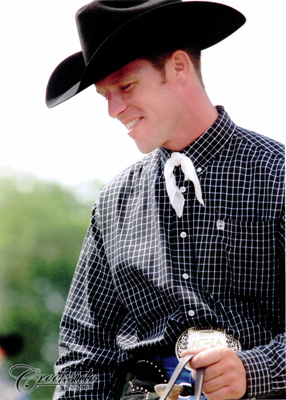
Dan Rawlings
Pricing can also vary widely based on the size of the bale, although simple math will reveal the price per pound is roughly equivalent.
“The bigger bales can be handled with the tractor so it’s not as labor intensive,” he says, “you put anything in a smaller package and it’s going to cost more because it’s more labor intensive. It’s the same with hay.”
A barn that has the ability to accept and store larger quantities can receive price breaks.
“If someone buys more than 400 bales they will get a discount and if they can buy a tractor trailer load there is more of a discount,” Chick says.
The actual price of hay fluctuates based on the type of hay and season to season, but Chick provides insight into potential pricing for the upcoming season.
“The 120 pound bales (of alfalfa) retail around $39.50 per bale and the small squares, 50 pounds, are around $6 -$10.00 per bale,” he says.
Even with lower fuel prices at the pump and early weather conditions that indicate a good growing season, Burris doesn’t anticipate match change in price this year.
“We try to stay in the $17-$19 per bale price delivered for high quality hay in 70-90 pound bales,” he says.
Large quantity orders can keep some prices in check.
“We do offer discounts on quantity. Hay is labor intensive so the fewer times we touch it the better,” he adds.
It’s all about relationships
Unless you’re able to inspect every single bale of hay you’re buying, it’s important to find a supplier you trust.
“I try to put my eye on everything I buy. Some farmers I’ve been dealing with for 10 plus years and I know their idea of good hay is the same as mine,” Wetherell says. “If you have a hay supplier who is consistent and doing a good job for you at a fair market price, stay with him.”
Developing lasting relationships is essential.
“I only broker with guys that stand behind their product,” Chick says, “we also guarantee the hay we sell. We’ve sold hay over 100 miles away and gone and switched it out because it wasn’t correct.”
Vet visits, farrier visits and hay are the three most important expenses for a horse.
“Personally, I want the best hay for my horses and my clients know that’s what I’m selling them too,” Burris says.



You must be logged in to post a comment Login